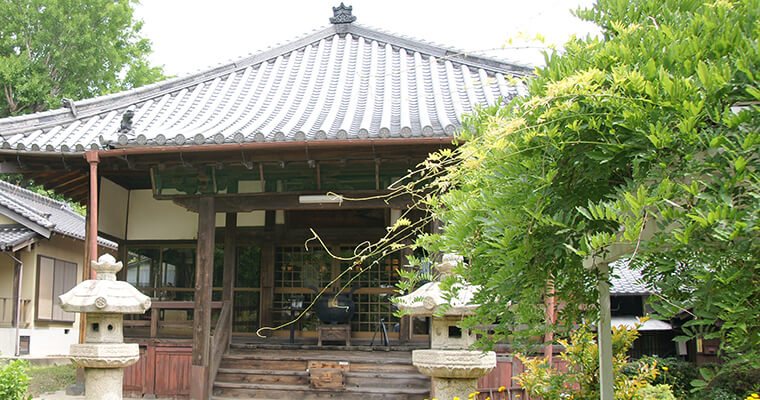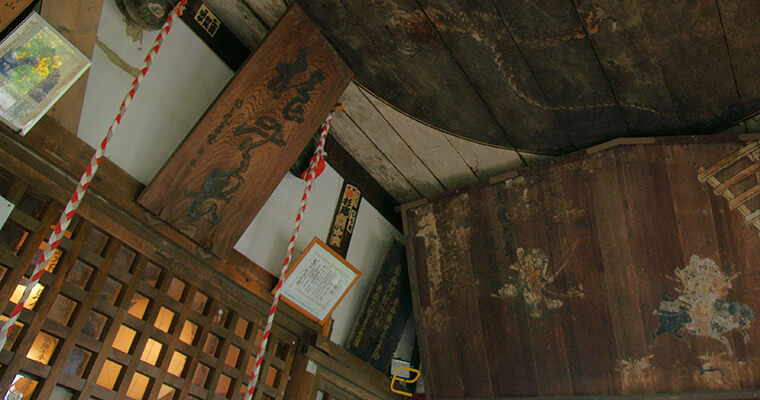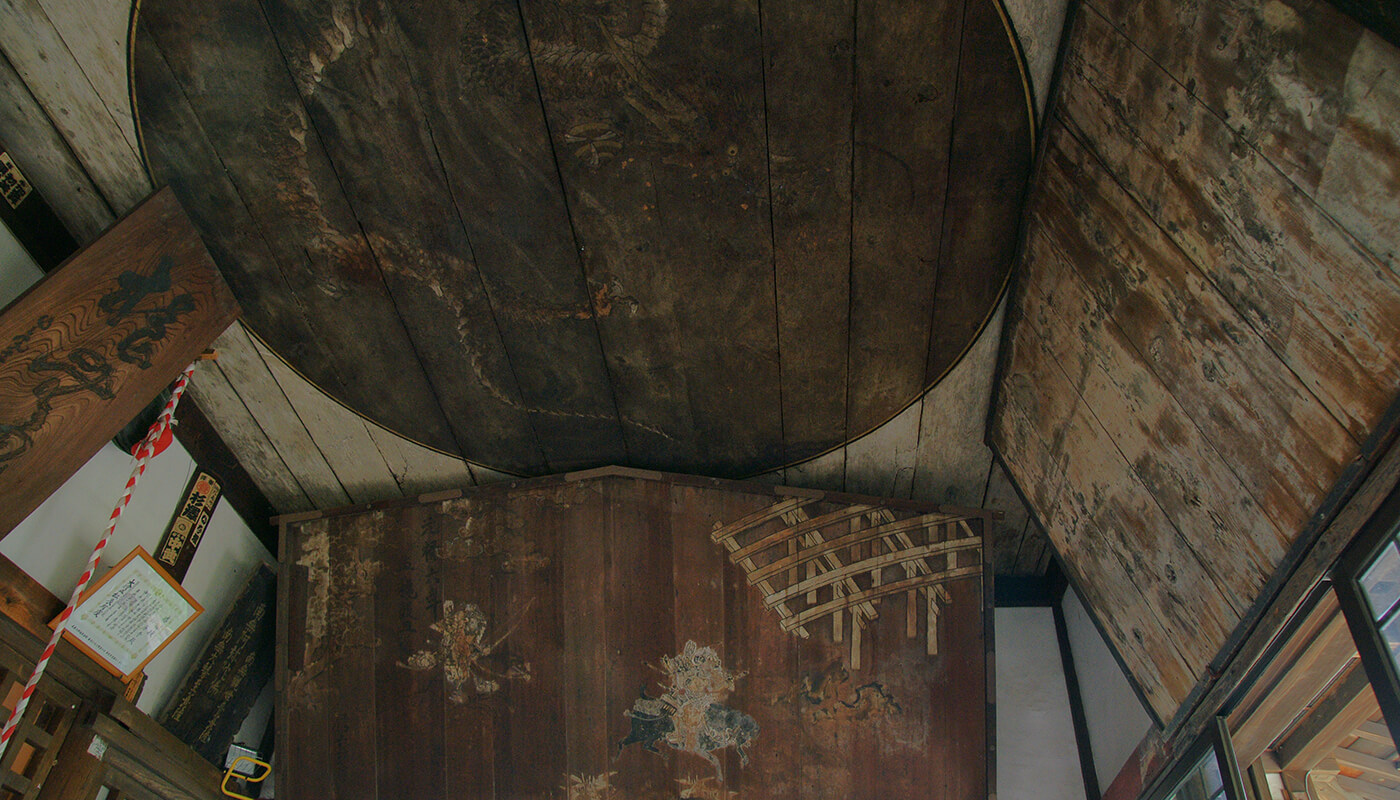Number 31Kangaku-ji temple
History of the temple
According to the legend Kangaku-ji was founded in the times of Emperor Shōmu (724-749) by Gyōki (668-749), a famous monk who traveled around Japan to preach to commoners. Until 16th Century the temple was located at the bottom of the Mount Hashirii on its northern side.
The main statue of Kangaku-ji is a statue originally enshrined at Kaizen-ji, a temple which was located in the same area, and moved after Kaizen-ji was closed. The statue representing Senju Kannon (Thousand-Armed Kannon) is 165.3cm (65in) high and believed to be made in the 11th Century.
Yata Ichirōsaemon, a 16th Century Lord of Yata Castle, was known for a strong religious devotion towards this Kannon. His castle, which was home for Yata clan, used to stand at the top of the Mount Hashirii. But after the troops of Oda Nobunaga attacked the castle in 1577, the head of the clan Yata Toshimoto was forced to commit suicide and the castle turned to ruin.
According to the historical records, Kangaku-ji was moved to the former location of Yata Castle somewhere between 1615 and 1624. A very religious man named Hanya, a vassal to the Lord of Mino province Honda Tadamasa, donated a large gold coin and helped the temple change its place from the bottom of the mountain to the top.
The temple complex was finally rebuilt at the new place in the second half of the 17th Century, at the times when Matsudaira Sadashige (1644-1717) was in charge of Kuwana province.
Between 1870 and 1880 the temple was closed and all the buildings fell into ruin. But thanks to the local community of believers, Kangaku-ji was rebuilt and reopened once again. Since then it became famous for a dragon painting on the sealing of the Main Hall and the large size votive tablet. The dragon is called “Water Drinking Dragon” and according to the legend it used to sneak out and break the nearby houses in search for water. People had enough of him and nailed him down to the sealing. Even though the color of the painting has faded and it is hard to recognize the shape, but the nail holes are still traceable.
Kangaku-ji temple’s complex consists of: the Main Hall, Taishi Hall (Hall devoted to Prince Shōtoku, originally from 1764-1772, rebuilt in 1991), Jizō Hall (Hall of Jizō – Bodhisattva who looks over children, travelers and the underworld), the Bell Tower, Kōshin mound (a mound devoted to Shōmen Kongō – deity who protects against diseases), the Stone with Buddha’s Footprints (made in 17th or 18th Century).
The main statue of Senju Kannon and the Stone with Buddha’s Footprints are both designated as a Mie Prefecture Cultural Properties.
Every year on the 9th and 10th of August a ritual called Tōka Kannon (Kannon of the 10th day) is held and many believers gather to participate in the prayer.
Seal stamps for this temple are available at Daifukuden-ji temple.
Seiyōzakki
Hashiriizan Kangaku-ji stands at the entrance to Kuwana. It is a temple number 31 of the Ise Pilgrimage. The main statue is Senju Kannon.

Outline
-
Honorific name
Hashiriizan
-
Temple's name
Kangaku-ji
-
Sect
Shingon Kōyasan branch
-
Religious service
Senju Kannon
(Thousand-Armed Kannon)





